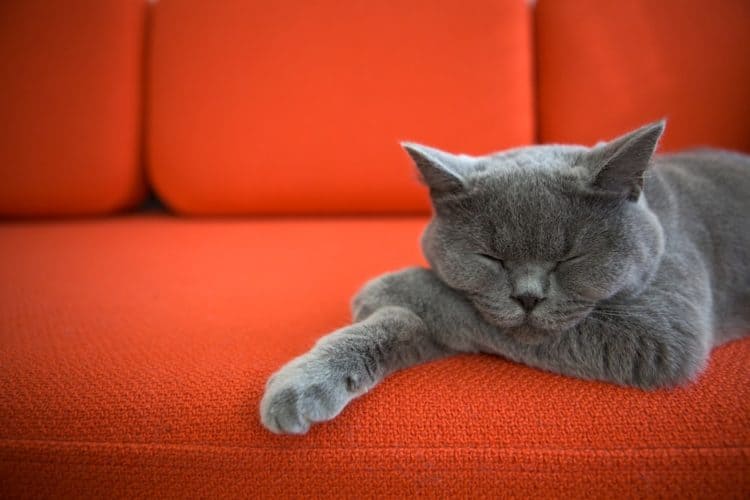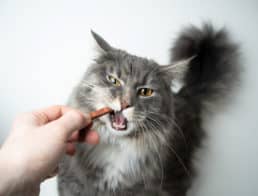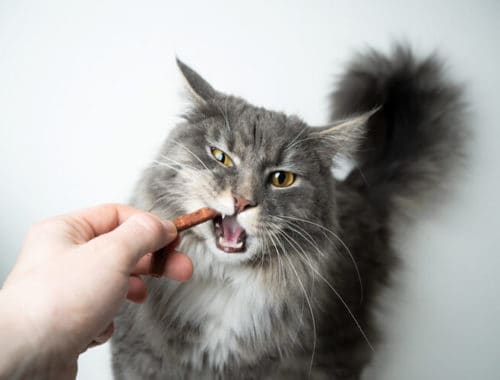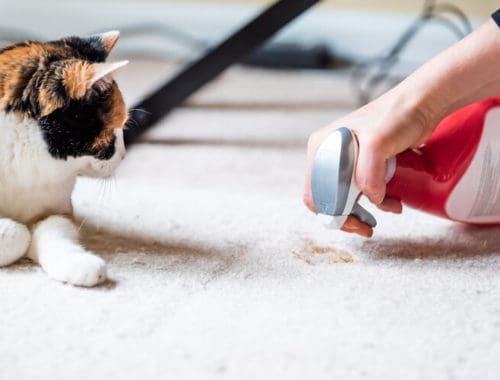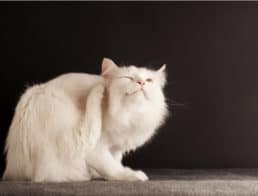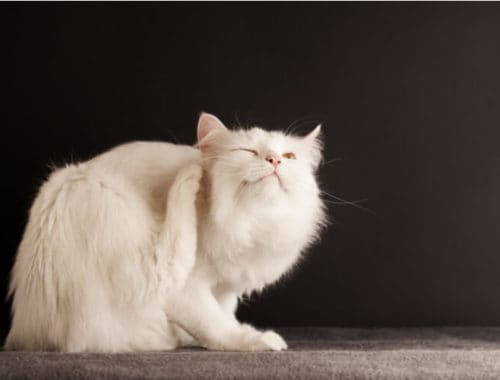Cats are known for their love of resting. In fact, cats need approximately fifteen to sixteen hours of rest every day. They are nocturnal animals and typically display a form of behavior called “crepuscular.” This means that they’re more active during both dawn and dusk periods, where they tend to look for moving prey like rodents around the house and outdoors—as they do in the wild.
Proper rest in felines is crucial as it boosts their general health, strengthens their immunity, and decreases their stress levels, among other countless benefits. Cats are calm animals in nature who require calm and quite environments that promote restful sleep. Certain domesticated cats rest more than others depending on factors such as age, weight, environment, and food consumption. Inadequate resting intervals can lead to health complications over time.
So what should you do if your cat is struggling to get enough sleep? Below we’ve outlined our top expert tips for increasing your cat’s rest periods.
In This Article
The 3 Different Types of Rest Cats Engage In
Before we launch into our expert tips for increasing your cat’s rest periods, let’s take a look at the different types of rest cats engage in. Having an understanding of the differences will help you to better understand how cats’ resting periods work.
The three basic types of sleep are napping, rapid eye movement (REM) sleep, and deep sleep.
As you will already be aware of, naps describe short periods of rest interspersed throughout the day. When cats nap, they are able to replenish the energy in their bodies. Cats are known for their penchant for napping, hence the term “catnap” came into being!
REM sleep is a form of rest that precedes deep sleep. Visible signs of REM sleep in cats include twitching of their paws or whiskers. This usually means that they’re dreaming, which is a process that only lasts for around 6 minutes.
Deep sleep in cats accounts for 40% of their total sleep periods and is the most essential form of sleep to their health.
Tips for Increasing Your Cat’s Rest Periods
Now that you know how cats rest, it’s time to learn how you can support your cat to get more zzz’s. Try out a few of our tips below and your kitty will soon be back on track.
Give Your Cat Melatonin
Melatonin is a hormone that is naturally secreted by a specific gland in the brain. If your cat is struggling to get proper rest, you can use melatonin as a sleep aid. It can be found in many cat treats and supplements including soft and hard chews. Be sure to pay attention to the product label and instructions to prevent accidental overdose.
Provide Plenty of Room Temperature Water
Proper hydration leads to better circulation throughout your cat’s body and stimulates parts of the brain that promote rest. It’s important for cats drink water during the day and reduce the amount they drink in the time leading to bedtime. Stick to a daily regime and try sprinkling catnip around their water bowls to encourage drinking. Another idea is to start using a cat water fountain, as this may be just the trick to entice them to get their h20 and sleep fixes.
Give Them Some Space
Cats need their own space as much as we do. They prefer secluded areas where they can hide and rest inside. This is because cats feel most comfortable in less crowded areas where there are fewer people watching them while they rest. Try expanding their existing rest spots by treating them to a cat tree, their very own cat house, or another piece of furniture they can rest in or on.
Upgrade their Bed
Just like we need a high-quality mattress to get the best sleep possible, cats require a comfortable cat bed to rest on. They love to feel cozy in a warm bed and enjoy those they can sink into and snuggle in throughout the day.
Eliminate Loud Noises in the Home
Try your best to keep loud noises in your house to a minimum and always make sure to talk to your cat in a soothing voice. Cats don’t like getting startled, particularly when they are trying to sleep, so louder sounds may increase their stress levels. The good news is that relaxing sounds and soft music (or even a wind chime) can help promote calmness.
Exercise and Give them Outdoor Time
Cats require lots of stimulation and activity during the periods that they’re awake. Go for a walk together or let them run around in an enclosed yard or area. When indoors, stimulate their mind with games that require both cognitive and physical stimulation, such as interactive cat toys such as chasers and teasers. Wands and cat wheels are also great in getting them excited, and eventually, to yearn for a rest.
Monitor Their Diet
If your cat isn’t getting as much rest as they should be, it may have something related with their diet. Consult your vet for their recommendations about what you should feed your restless cat. Foods with less natural sugar counts or higher protein levels and lower carbohydrates may help. It’s important to keep track of exactly what they’re eating, especially if your cat is diabetic or you have an older cats with less energy.
Sprinkle Catnip
Catnip is an all-natural supplement that cats love that helps promote calm. Buy catnip from a reputable brand or try growing some fresh catnip in your own backyard. You can then sprinkle it around your cat’s rest areas. Catnip isn’t effective for all cats, but this is a great trick if it is for yours.
Use a Different Type of Cat Litter
What does cat litter have to do with sleep? Well, many types of cat litter are high in dust particles that might cause difficulty in breathing or sleeping. For example, clay-based cat litter can get into their tiny little lungs. Try swapping it out for something more solid in granulation such as corn-based cat litter.
Attach an Activity Monitor to Your Cat
In order to determine whether or not your cat is getting in their 14 to 16 hours of rest, why not track their movements with an activity monitor? You may discover that much of the time they’re moving you’re not paying attention, not close by, or you’re simply sound asleep. In some cases, cats that are hyperactive and have been displaying such behavior since adolescence may have a health problem that needs to be managed and treated.
Ask Your Vet for Advice
If you’re noticing a substantial difference in your feline’s usual sleeping patterns there could be an underlying cause that requires expert diagnosis. Only a licensed veterinarian can provide this, so don’t be afraid to seek proper guidance from them if these are newer behaviors your cat is exhibiting.
